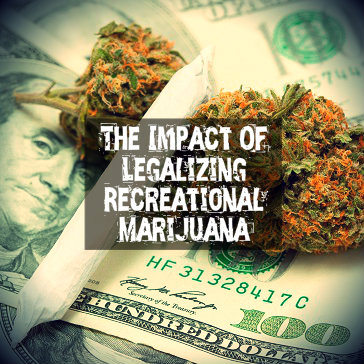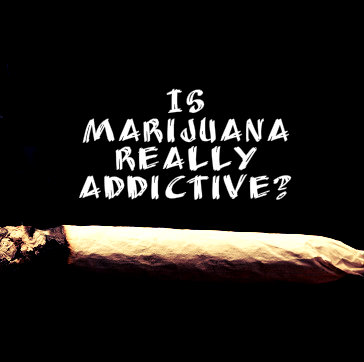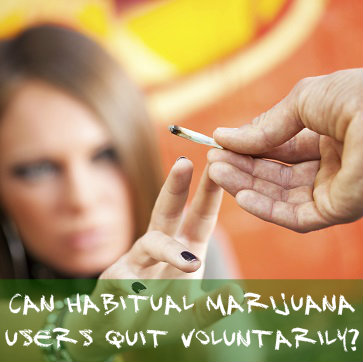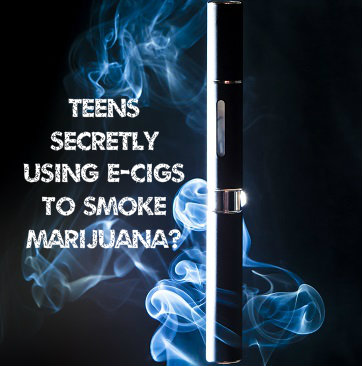When Colorado’s new law legalizing the use of marijuana went into effect there were mixed feelings about the consequences. Some opponents of the legalization argue that more children will become addicted to the drug at a younger age. They also caution that marijuana is a “gateway drug” to harder drugs like heroin and cocaine, and that it is known to cause health and psychological problems. What are Colorado’s laws that will aid in controlling marijuana consumption, keeping it in the hands of responsible individuals who are of age?
The Laws And Ways Of Obtaining Pot
Colorado actually has two sets of marijuana laws on the books. The laws for recreational use went into effect on January 1, 2014, but medicinal use has been legal since November 7, 2000. Not only are there different laws but there are also different locations for obtaining pot, with medicinal users getting it from dispensaries and recreational users going to newly opened shops.
 The main reason for the separate laws is the taxes levied against recreational users. Though medicinal users pay less taxes, they also have to get a Colorado Medical Marijuana Registry identification card, otherwise known as a “red card,” which costs $90 to obtain and to renew. (The price will be lowered to $15 in February 2014.)
The main reason for the separate laws is the taxes levied against recreational users. Though medicinal users pay less taxes, they also have to get a Colorado Medical Marijuana Registry identification card, otherwise known as a “red card,” which costs $90 to obtain and to renew. (The price will be lowered to $15 in February 2014.)
Colorado law bans the consumption of marijuana in public places, driving under the influence and taking the drug out of state. The state has also made it easier to win convictions against drivers who caused accident or injury while under the influence of drugs. The legal age of use is 21.
Recreational users can legally grow and possess up to six plants, up to one ounce of cultivated marijuana while traveling, and give a gift of up to one ounce to those 21 and up. Medicinal users can grow six plants as well, can possess up to two ounces of cultivated marijuana and can also gift up to an ounce to others who are at least 21.
Legal Marijuana Possibly Bringing In Big Bucks
Those who are celebrating the new law are optimistic about the revenue that the retail stores will generate. Research conducted by ArcView Market Research, a company that tracks data from the marijuana industry, reported that medical marijuana generated $1.4 billion in 2013. The researchers predict that number to grow to $2.34 billion in 2014, thanks to the new laws in Colorado and those in Washington, which will have its own law legalizing marijuana that will go into effect later this year. State officials predict that marijuana sales will generate an estimated $67 million in annual tax revenue.
Legal Marijuana’s Impact On Future Abuse And Addiction
Whether Colorado residents are for or against the legalization of marijuana, the impact of legalization on abuse and addiction could be seen for years to come.
Read More About The Pros And Cons Of Legalizing Recreational Marijuana And What It May Do For The Economy Of Our Country And The Health Problems Of Users
Studies show that marijuana is being produced today is over 10 percent more potent than it was 30 years ago, and some producers have created the strongest strains ever recorded.
A lab at the University of Mississippi that tracks potency in marijuana seized by federal law enforcers reported finding strains with 37 percent potency. In 1972, the average potency was less than one percent. Dr. Mahmoud ElSohly, director of the Ole Miss studies, says the danger is not the marijuana itself, but that young users don’t know what they’re smoking is so potent.
 Dangerous Side Effects Of Marijuana
Dangerous Side Effects Of Marijuana
The National Institute on Drug Abuse (NIDA) says that high levels of THC, the ingredient in marijuana that causes psychoactive effects, could lead to a drop in IQ for those who smoke at a young age.
It is the altered state of mind which causes disorientation, anxiousness and poor decision making that’s the most dangerous side effect of smoking marijuana. When people smoke highly potent strains they may not be prepared for the side effects and consequences.
It’s not the age at which young adults start using, it’s the perception that marijuana isn’t dangerous.
Many Teens Are Smoking Marijuana And Are Not Properly Educated Of The Harm
According to the NIDA survey “Monitoring the Future,” over one-third of seniors admitted to smoking marijuana in the preceding 12 months. The number of middle school-aged children who admit to marijuana use has tripled from 1993. More astonishingly, 60 percent of high school seniors report not seeing regular marijuana use as harmful.
On top of being uneducated about the harmful consequences of smoking marijuana, users are also putting unknown chemicals into their bodies. Marijuana producers are always creating different strains and mixing the drug with other ingredients, causing unknown side effects. So there is no way for people who don’t know what they are smoking to anticipate the strong effects the drug will have on them. This takes even more control away from users and creates dangerous situations, like increased changes of intoxicated driving.
Read More: Is Marijuana Really Addictive?
23 Dec 2013
Is Marijuana Really Addictive?
Many people take marijuana use with a grain of salt. It’s not a hard drug, right? It’s legal in two states now, so how bad could it be for you? If you have a loved one, maybe a teenager, who is smoking pot, you may wonder if he is at risk of becoming addicted. You should be worried, but not for the reasons you might think.
Marijuana Addiction
 Most people who use marijuana do so recreationally and without developing an addiction. When compared to other drugs that are highly addictive, like heroin, meth or cocaine, marijuana seems very innocent. Those harder drugs can result in dependence in a user very quickly. What makes some drugs so addictive is that the body becomes physically dependent upon them. A heroin addict needs another hit just to feel normal again, to stop the pain, the anxiety, the irritability and the shaking that come with withdrawal.
Most people who use marijuana do so recreationally and without developing an addiction. When compared to other drugs that are highly addictive, like heroin, meth or cocaine, marijuana seems very innocent. Those harder drugs can result in dependence in a user very quickly. What makes some drugs so addictive is that the body becomes physically dependent upon them. A heroin addict needs another hit just to feel normal again, to stop the pain, the anxiety, the irritability and the shaking that come with withdrawal.
Marijuana does produce some light withdrawal symptoms. A regular user might start to feel a little irritable and experience an elevated heart rate when he has stopped using for a day or two. These symptoms are much milder than those seen with harder drugs, though. So is marijuana addictive? The answer is yes. Addiction is more complicated than physical dependence.
It is possible that your teen will become addicted to marijuana if he uses it regularly and frequently. If he begins to smoke pot in a way that is compulsive, if he can’t seem to stop, he needs it to relax, or he needs it to get going in the morning and to sleep at night, these are all signs of an addiction, whether he is physically dependent on the drug or not.
Marijuana Risks
Even if your teen does not become addicted and sticks to casual, recreational use of marijuana, there are still risks. When he smokes pot, it makes his heart rate go up, it makes him disoriented, it makes him uncoordinated and it may make him anxious or paranoid. Marijuana is a mind-altering substance. If he tries to do anything while high, such as drive a car, or even just cross a street, he could cause an accident.
Smoking pot also carries many of the same risks as smoking cigarettes. Substances in the smoke can cause cancer and lung disease, especially with regular use. Long-term marijuana use has been shown to cause abnormalities in the brain and the development of psychiatric problems. Another problem with smoking pot is that it tends to make people lazy and apathetic. This is not true for everyone, but someone who is high all of the time is not likely to get much done.
Parents Talking With Their Teens About Marijuana Use And Its Risks
So although marijuana can in fact be addictive, it is important to remember that it is not in the same class as harder drugs. There are different ways to become addicted to a substance or a behavior. Addiction to marijuana is often more of a behavioral habit than a physical dependence.
Aside from addiction, there are many other reasons to be concerned if your teen is smoking pot. Sit your teen down for a talk about the dangers and risks associated with using this drug. Explain the possibility of addiction and the physical damage it can do to his body. With information, you empower your teen to make the best choices.
Read More About How Marijuana Use Is Linked To Mental Disorders
27 Nov 2013
Can Habitual Marijuana Users Quit Voluntarily?
 Cannabis is a THC-containing plant species known for its ability to produce strong mental and physical alterations when smoked or ingested. Substantial numbers of cannabis users develop symptoms of drug addiction, especially when they take the drug daily or start using the drug early in life. In a study published in October 2013 in the journal Drug and Alcohol Dependence, researchers from two U.S. universities examined the considerations that affect a habitual cannabis user’s ability to voluntarily stop his or her drug intake. These researchers identified three specific factors—withdrawal symptoms, peer pressure and negative mental states—that play prominent roles in the success or failure of self-initiated cannabis cessation attempts.
Cannabis is a THC-containing plant species known for its ability to produce strong mental and physical alterations when smoked or ingested. Substantial numbers of cannabis users develop symptoms of drug addiction, especially when they take the drug daily or start using the drug early in life. In a study published in October 2013 in the journal Drug and Alcohol Dependence, researchers from two U.S. universities examined the considerations that affect a habitual cannabis user’s ability to voluntarily stop his or her drug intake. These researchers identified three specific factors—withdrawal symptoms, peer pressure and negative mental states—that play prominent roles in the success or failure of self-initiated cannabis cessation attempts.
Cannabis gets its name from a plant species called Cannabis sativa L., which has two subtypes, known as Cannabis sativa and Cannabis indica. While C. sativa and C. indica have somewhat differing effects on the human body, they both derive their main mental and physical impact from the presence of a chemical compound called tetrahydrocannabinol (THC). A number of compounds related to THC also contribute to cannabis’s mind- and body-altering properties. Most people are passingly familiar with a form of cannabis called marijuana, which is made from dried, unconcentrated C. sativa or C. indica leaves, flowers and stems. Less commonly available cannabis products include concentrated substances called hashish and hashish oil.
Cannabis Abuse And Addiction
On a federal level, cannabis products are illegal in the U.S. in any setting. For this reason, any form of marijuana, hashish or hashish oil use can reasonably be construed as drug abuse. However, from a medical perspective, cannabis abuse occurs in people whose non-addicted cannabis intake substantially interferes with the ability to participate in everyday life. Cannabis addiction occurs in people who become chemically dependent on the effects of THC, then go on to develop behavioral patterns strongly centered on obtaining and using cannabis. According to standards set by the American Psychiatric Association in 2013, cannabis abusers and cannabis addicts have a single condition called cannabis use disorder.
Roughly nine out of every 100 marijuana users will develop an addiction to the drug, the National Institute on Drug Abuse reports. This rate nearly doubles among users who begin their intake of the drug during or before their teenage years. In addition, long-term, daily marijuana users have addiction rates that fall between 25 percent and 50 percent. Anyone addicted to marijuana, hashish or hashish oil can develop cannabis withdrawal when they rapidly reduce or discontinue their drug intake.
Cannabis Withdrawal Symptoms
- Recurring cannabis cravings
- Heightened anxiety levels
- Decline in appetite
- Trouble sleeping
- Unusually agitated or irritated disposition
Factors That Affect Voluntary Cessation From Marijuana Use
In the study published in Drug and Alcohol Dependence, researchers from the University of Houston and Louisiana State University looked at the various factors that can increase or decrease a person’s ability to voluntarily stop smoking or ingesting cannabis. This assessment involved a group of 30 adult cannabis users attempting to halt their drug intake; the vast majority of these individuals (84 percent) had clear symptoms of cannabis use disorder. During each day of the two-week study, all of these participants gave regular reports of their positive and negative mental states, level of cannabis withdrawal symptoms, level of cannabis use among their peer groups and conscious reasons for failing to halt cannabis use or returning to cannabis use after beginning cessation efforts.
Effects Of Quitting Marijuana Smoking
After reviewing the reports submitted by the study participants, the researchers found that people attempting to voluntarily stop using cannabis commonly experience a spike in their level of withdrawal symptoms, as well as a spike in their experience of unusually negative states of mind. The researchers also found that people going through voluntary cessation while associating with cannabis-using peers have substantially more exposure to the drug than people who typically used the drug on their own in the past. In combination, these three factors (prominent withdrawal symptoms, a negative mental outlook and peer-related exposure to cannabis) present strong obstacles to successful self-initiated cessation efforts among cannabis users.
Why Marijuana Smokers Continue Using
When asked why they continued or returned to cannabis use, the participants in the study published in Drug and Alcohol Dependence listed a desire to avoid negative mental states as their main conscious reason. The authors of the study note that most people attempting to voluntarily stop using cannabis try to support their efforts by modifying their behavioral patterns and staying away from the drug, not by altering their cannabis-related beliefs or thought processes.
Are Marijuana Users Bad At Tracking How Much They Smoke? Find Out In This Fascinating And Informative Post
Cannabis is the umbrella term for the mind-altering products marijuana, hashish and hashish oil, which come from the cannabis group of plant species. All of these products create substantial risks for physical dependence and addiction when used regularly for relatively extended amounts of time. Cannabis use also comes with a known risk for psychosis and certain other mental health problems. In a study published in August 2013 in the journal Addiction, a team of Dutch researchers looked at the relative risks for mental illness in dependent/addicted marijuana users and users unaffected by dependence/addiction. The researchers concluded that the mental illness risks in these populations differ in substantial ways.
What Exactly Is Cannabis?
 Marijuana comes from dried, non-concentrated parts of Cannabis plants such as the leaves, stems and flowers. Hashish and hashish oil, on the other hand, come from the purposeful concentration of these plant parts. All three of these cannabis-based products contain the same active ingredient, known informally as THC and formally as tetrahydrocannabinol. THC triggers changes in brain function that create the classic effects of cannabis intoxication, including altered thinking and sensory perception, a rise in pleasurable feelings, appetite increases, reduced clarity in several major areas of consciousness, and a reduced ability to move the body’s muscles in an efficient, controlled manner.
Marijuana comes from dried, non-concentrated parts of Cannabis plants such as the leaves, stems and flowers. Hashish and hashish oil, on the other hand, come from the purposeful concentration of these plant parts. All three of these cannabis-based products contain the same active ingredient, known informally as THC and formally as tetrahydrocannabinol. THC triggers changes in brain function that create the classic effects of cannabis intoxication, including altered thinking and sensory perception, a rise in pleasurable feelings, appetite increases, reduced clarity in several major areas of consciousness, and a reduced ability to move the body’s muscles in an efficient, controlled manner.
Marijuana’s Dependence And Addiction
Despite its reputation as a relatively harmless, “natural” substance, THC can make substantial alterations in a person’s long-term brain function when used repeatedly or habitually over time. These changes in function can eventually make the brain “see” the presence of THC as a chemical norm rather than a rare or occasional event. When this situation arises, the affected individual has what’s known as a physical dependence on the effects of cannabis/THC. By itself, physical dependence on a substance does not necessarily constitute a dangerous or harmful situation. However, when combined with persistent drug-seeking behaviors and other disruptive or dysfunctional actions, dependence establishes the necessary groundwork for the onset of a drug addiction.
Mental Health Risks Of Marijuana Use
While under the temporary influence of cannabis products, users commonly experience short-term symptoms that closely approximate psychosis, an altered mental state (classically associated with schizophrenia and schizophrenia-related illnesses) that primarily features delusional thought processes and/or some sort of sensory hallucination. In some cases, regular users develop a more extended form of psychosis that continues as long as a pattern of cannabis intake continues. In addition, current evidence strongly indicates that habitual cannabis users have increased long-term chances of developing diagnosable cases of schizophrenia or depression that continue to exert their effects even when a pattern of cannabis intake stops.
In the study published in Addiction, researchers from the University of Amsterdam and the Netherlands Institute of Mental Health and Addiction sought to determine if people physically dependent on cannabis have higher risks for developing mental health issues than cannabis users unaffected by dependence. They made this determination by tracking the mental health diagnoses of 252 young adults affected by cannabis dependence, as well as the diagnoses of 269 young adult, non-dependent cannabis users. For comparison’s sake, they also tracked the mental health diagnoses of over 1,000 non-cannabis-using young adults. The researchers did not attempt to differentiate issues of cannabis dependence from issues of cannabis addiction.
Effects On Mental Illness In Dependent vs. Non-Dependent Marijuana Users
After reviewing the gathered data, the researchers found that both dependent and non-dependent cannabis users have a higher rate of mental illness than people who don’t use cannabis at all. They also found that dependent and non-dependent cannabis users are similar in most ways and share comparable patterns of general cannabis use, patterns of other forms of substance use and histories of problematic or traumatic childhoods. While dependent cannabis users have a higher overall rate of mental illness than non-dependent users, non-dependent users have higher rates than dependent users for illnesses called externalizing disorders, which include attention-deficit/hyperactivity disorder (ADHD), oppositional defiant disorder and conduct disorder. Conversely, dependent users have particularly high rates for illnesses called internalizing disorders, which include mood disorders (depressive and bipolar illness) and a range of conditions referred to together as anxiety disorders.
Most of the difference in the mental illness rates between dependent and non-dependent cannabis users disappeared when the authors of the study published in Addiction took certain secondary factors into account, including the use of other substances and the presence of traumatic or problematic childhoods. However, even with these adjustments, dependent users still have higher illness rates than non-dependent users. Except for the spike in their rates for ADHD, oppositional defiant disorder and conduct disorder, non-dependent cannabis users have mental health profiles that closely resemble the profiles found among people who don’t use cannabis.
18 Nov 2013
E-Cigarettes Secretly Used To Hide Drug Use
The e-cigarette is a modern invention and an alternative to tobacco cigarettes. They were designed to allow people to smoke and to get nicotine into the bloodstream without inhaling all of the toxins found in tobacco. E-cigarettes may be helping people to quit smoking, and because they do not produce actual smoke, they may also allow people to get their nicotine without affecting the people around them.
On the surface, it seems that e-cigarettes are a great invention that can help people. Unfortunately, there are downsides to these fake cigarettes, not least of which is the fact that they can be used to smoke illegal drugs, like marijuana. Because of the way they work, someone can smoke pot using an e-cigarette without being detected.
The E-Cigarette Revolution
 An e-cigarette is different from a traditional cigarette in that it does not use tobacco. Instead, it uses batteries and a liquid solution of nicotine. The battery heats and vaporizes the solution so that the user inhales and exhales vapors, rather than smoke. Because nicotine is the only ingredient, the user is also not inhaling all of the additives in tobacco that are so harmful, such as tar, acetone and arsenic.
An e-cigarette is different from a traditional cigarette in that it does not use tobacco. Instead, it uses batteries and a liquid solution of nicotine. The battery heats and vaporizes the solution so that the user inhales and exhales vapors, rather than smoke. Because nicotine is the only ingredient, the user is also not inhaling all of the additives in tobacco that are so harmful, such as tar, acetone and arsenic.
Although nicotine is still a drug, and one that is harmful and addictive, smoking an e-cigarette is much less dangerous than smoking tobacco cigarettes. It is also less harmful to others around the smoker because there is no secondhand smoke. Without the offensive fumes, it may be possible for people to smoke using e-cigarettes in areas that are normally restricted to smokers.
For the above reasons, e-cigarettes are set to become big sellers in the U.S. and elsewhere. Some experts are even predicting that they will start to outsell real cigarettes within a decade. E-cigarettes are already big business in Europe. The European Parliament recently rejected a proposal to regulate them as medical devices, which would have meant tight restrictions on sales.
E-Cigarettes Being Used To Smoke Marijuana
Although e-cigarettes may have been created as healthier, alternative delivery devices for nicotine and to help smokers kick the habit, clever drug users have already crafted them for different uses. The cartridge of liquid nicotine solution that goes into an e-cigarette can easily be replaced by any liquid. Any substance can be vaporized and inhaled using one of these devices.
Most commonly, abusers are using a cartridge with a liquid solution of THC, the main psychoactive substance found in marijuana. With liquid THC in an e-cigarette, a person can get high and yet appear to be legally inhaling legal, nicotine vapors. The same property of e-cigarettes that allows users to smoke without offending those around them, allows for covert use of illicit drugs. The vapors produced by the e-cigarette are odorless. A person can get high without arousing suspicions.
Teens Smoking Marijuana With No Recognizable Odor
While an adult covertly smoking pot is a concern, a bigger one is the use of marijuana by teenagers. As the presence of e-cigarettes proliferates, teens are finding that they make an excellent vehicle for smoking pot. Smoking marijuana produces a characteristic odor that clings to clothes, hair and fingers. With e-cigarettes, a teen can inhale liquid THC, get high, and never give off the usual signs. Parents who are concerned that their teens may be using marijuana will have to be more vigilant and look for other signs of intoxication.
E-Cigarettes Targeting Young People?
Another concern regarding teens and e-cigarettes is that these new devices may be targeting young people. E-cigarettes can be sold with different types of nicotine cartridges with flavors like strawberry, peach and grape. They are also sold online, which makes it easier for kids to get a hold of them. If kids start using these devices at a young age, they may be more inclined to try other substances. In other words, e-cigarettes may become the new gateway drug. The problem has already begun, as statistics indicate that the number of middle and high school students using e-cigarettes is rising.
It seems that e-cigarettes have a place in our modern world. They allow adults to use a legal substance in a way that is less harmful than cigarettes. They also help those who want to quit the habit of smoking. On the other hand, e-cigarettes pose a big problem. Until we can figure out how regulate them fairly, or how to detect illegal drugs being used in e-cigarettes, parents and other adults should be aware of the possibility that they are being abused by teens.
Read About Smoking Marijuana And The Future Effects On Teens
Marijuana is a plant-based drug known for its potential to produce physical/mental dependence and other significant health issues when used repeatedly over extended periods of time. Generally speaking, health risks associated with marijuana use are linked to such factors as consumption level and the potency of any given batch of the drug. In a study published in October 2013 in the journal Addiction, a multi-institution Dutch research team sought to determine whether young adult users can accurately gauge their level of marijuana consumption or the potency of the marijuana they smoke or ingest. These researchers concluded that young adults generally do a poor job of accurately tracking their marijuana usage.
Effects And Health Consequences Of Marijuana
![]() Marijuana is the most readily available form of a plant-based drug called cannabis, which has a chief active ingredient called THC (tetrahydrocannabinol). When THC molecules enter the bloodstream, they attach themselves to nerve cells inside the brain and trigger a form of mind alteration classically associated with effects such as heightened pleasure levels, reduced body coordination and substantial changes in normal thought and perception. In controlled circumstances, marijuana use is now legal in certain jurisdictions across the U.S. However, most states still consider marijuana use illegal, and federal statutes also prohibit use of the drug.
Marijuana is the most readily available form of a plant-based drug called cannabis, which has a chief active ingredient called THC (tetrahydrocannabinol). When THC molecules enter the bloodstream, they attach themselves to nerve cells inside the brain and trigger a form of mind alteration classically associated with effects such as heightened pleasure levels, reduced body coordination and substantial changes in normal thought and perception. In controlled circumstances, marijuana use is now legal in certain jurisdictions across the U.S. However, most states still consider marijuana use illegal, and federal statutes also prohibit use of the drug.
According to the National Institute on Drug Abuse, marijuana use is associated with mental and physical health risks that include learning and memory deficits during adolescence, lowered IQ scores during adulthood, temporary heart rate increases, heartbeat irregularities, impaired judgment and decision-making, impaired memory functions, a reduced ability to control body movements, the same types of lung-related ailments that commonly affect cigarette smokers and temporary bouts of psychosis (a mental health term for hallucinations and/or delusional thinking). In addition, habitual smokers of the drug have heightened risks for developing longer-term forms of psychosis that persist over time.
Marijuana Addiction Risks
Marijuana has a relatively benign reputation when compared to other powerful, illicit or illegal substances such as amphetamine/methamphetamine, cocaine or opioid narcotics. Despite this reputation, current scientific evidence indicates that all habitual marijuana users run a considerable risk of becoming physically dependent on the drug and subsequently developing the drug-oriented personal and social behaviors classically associated with the presence of addiction. Roughly 17 percent of individuals who start marijuana use before reaching adulthood become addicted, while anywhere from one-quarter to one-half of all everyday users develop an addiction. Part of the addiction risk associated with the drug stems from a rise in marijuana potency over the last several decades. While some sources report a 3,000 percent increase in the drug’s potency in that timespan, more reliable estimates place the increase in strength at anywhere from 200 percent to 600 percent.
Marijuana Smoker’s Estimates Of Usage
In the study published in Addiction, researchers from three Dutch institutions sought to determine how accurately habitual marijuana users can track their intake of the drug. To a certain extent, accurate tracking could potentially reduce the risks for the onset of addiction by allowing users to gauge their level of involvement in drug use and curb that level when necessary. The researchers made the first part of their assessment by asking 106 young adults to estimate their level of marijuana use, as well as their level of intoxication and the relative potency of the marijuana they consumed. Next, the researchers compared the participants’ estimates to objectively verifiable measurements of these same factors.
The authors of the study found that, by objective measurement, the amount of marijuana used by an individual in any given situation varies considerably, as does the potency of any given marijuana batch. However, they also concluded, marijuana users typically do a bad to mediocre job tracking these changes in potency and amount. As a result, marijuana users tend to have only a partially reliable ability to understand and monitor their true level of marijuana use.
Significance And Conclusions Of Marijuana-Use Study
The authors of the study in Addiction did not specifically associate a limited ability to track marijuana usage with increased risks for physical dependence and addiction. However, by logical inference, people who don’t know how much marijuana they use or how strongly that marijuana affects them may fail to notice key physical and mental changes that signal the onset of dependence- and addiction-related problems. Subsequently, they may fail to take critical steps necessary to prevent the onset of dependence or addiction. The study’s authors note that young adult marijuana users don’t entirely fail to track their marijuana intake; instead, they simply track their intake too poorly to make reliable estimates.
My story of addiction and recovery is the story of a near miss and an incredibly lucky break. Therapists talk about resilience and protective factors (as opposed to risk factors)—well, I had a boatload of risk factors but somehow I was able to muster some reserves, survive and ultimately thrive.
My story begins when I woke up from a blackout and realized that I had been raped. I remember drinking the night before, but I don’t remember anything from about halfway through the night until the next morning. The other people at the party helped me piece it together—what they saw and heard plus what I felt and what it all added up to. I was 13 years old and was already drinking myself into blackouts. The boy who raped me said he didn’t remember it either. He was only 14.
Within a year I was raped again, this time by an adult—the father of the child for whom I babysat. He was drunk. He was driving me home from babysitting his infant daughter, and made a wrong turn. I knew what was coming and just braced myself for it. I never told anyone.

Stopping One Addiction And Dangerously Starting Several Others
I stopped drinking but I didn’t stop trying to drown. I smoked marijuana, ate Quaaludes, black beauties, and pink footballs; I snorted cocaine, and eventually snorted heroin. I dated a dealer, and did anything I was handed, no questions asked. It came to me one day, an epiphany of sorts: I realized that if I continued to live the way I had been living that I would die. I had stopped short of using needles, but snorting coke and heroin wasn’t getting me high anymore. I had to escalate again, or get clean, or face the reality that life as a heroin addict-garbage head was likely going to kill me.
A mental health professional had said to me that women with my history end up either dead or in prostitution. For a 15-year-old, this was a pretty heavy realization. I wanted to talk with my mom about it, but when I asked her to talk with me later that day, she said no. I pressed her, telling her that I needed her to listen to me. “No,” she said, “I can’t listen to you.”
Pain, Molestation And Addiction At A Young Age
So maybe my story doesn’t begin at age 13 in a blackout after all. If by age 15 my mom couldn’t tolerate listening to me, obviously a whole lot more was going on and had been for some time. I started drinking when I was 12. I wasn’t the only seventh-grader who was drinking, but I was likely the only one who was drinking to deal with flashbacks.
Backing up another year, things had happened that I still struggle to name. Rape is too simple and it conjures up the wrong set of images. Incest is too familial and can’t capture the way it feels when it is your teacher. Yes, my teacher, my sixth-grade teacher.
There aren’t words for what he did; there are sentences. He was a pedophile, and he groomed me for months, setting me up to be in a position where I wouldn’t say no and I wouldn’t tell anyone. He betrayed my trust and he took my childhood at age 11. I loved him and he said he loved me. It was truly confounding. It went on for months, my lies to my mom about where I went after school, my first lies ever to anyone.
It was Lolita, so I’m told—a novel that no matter how wonderfully written it may be, I have never been able to read it. At the end of the school year, he disappeared. Eventually I told a friend, and she told my mom. Police were called, school officials informed. I was interviewed, and then interviewed again by a special police “verifier” to determine whether I was making it all up. I wasn’t.
Choosing Life And Healing In Recovery Over A Life Of Pain And Addiction
After spending the next few years trying to not feel anything, and then choosing to live instead of die, recovery was a very long and difficult road. Not drinking or drugging was relatively easy. Figuring out what to do with all those feelings and how to get my needs met in healthy ways was the real recovery. It took years of therapy, and a passionate will to “be better”—to not only stop trying to kill myself, but to actually enjoy living.
For a while, pursuing some sort of healing was a full-time endeavor. I chased healing and recovery, stalked it, pursued it relentlessly. I was vulnerable to healers of every make and model, and spent money I shouldn’t have spent and time I didn’t have seeking healing.
While I learned a ton and all of it was useful at some level, I think the critical moments were back in my teens when I chose—consciously chose—to live and to live well. I had no idea how I would make that happen, but it was adolescent spunk and contrariness that fueled my strength. Mom won’t listen to me? I’ll show her. In fact, a decent amount of “I’ll show her” propelled me forward through the hardest times. During that critical and vulnerable time, the anger and the desire to show my mom that I would get through this without her help was probably the single biggest protective factor I had going for me.
Reconciliation With Self And Family
Mom and I are reconciled now. We rarely talk about what happened—it is still a sore subject for both of us. Her pain at failing to protect me from a predator is a wound from which she’s had to heal. The rough ride through my teens is something I’ve had to move past—not easy when I was invited to witness teenage years all over again, ringside, as my daughter grew up. Now she is 19 and more whole and healthy than I think I ever have been, and while I can’t take credit, at least I can say with some relief—my past did not infect her.
At some point in my 40s, I stopped chasing down healing. Not that I declared myself finished with that project, but more to the point I realized that no one is ever fully finished. I am back on a level playing field. The challenges that were tossed in my path when I was young no longer haunt me and I am truly happy with my life. I’ve been through a few dark tunnels, and who knows, maybe more will come my way. But for now, for today, I can feel all I feel and deal with whatever comes my way. Life isn’t perfect, but it is good enough.


